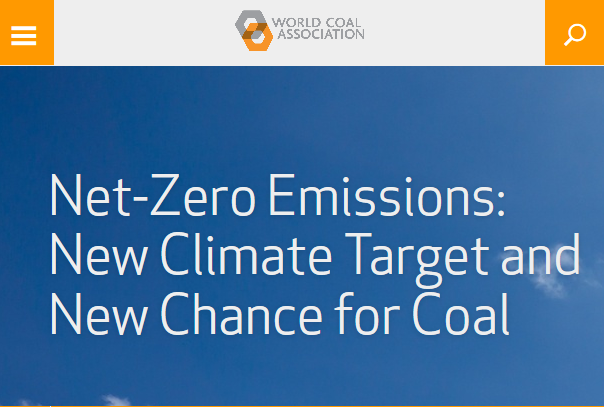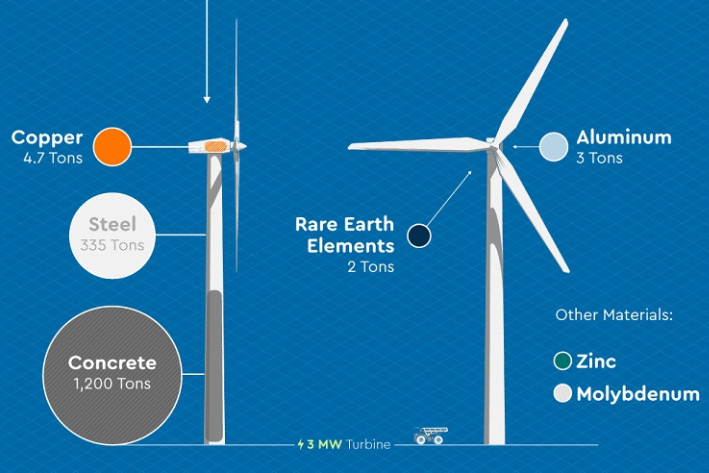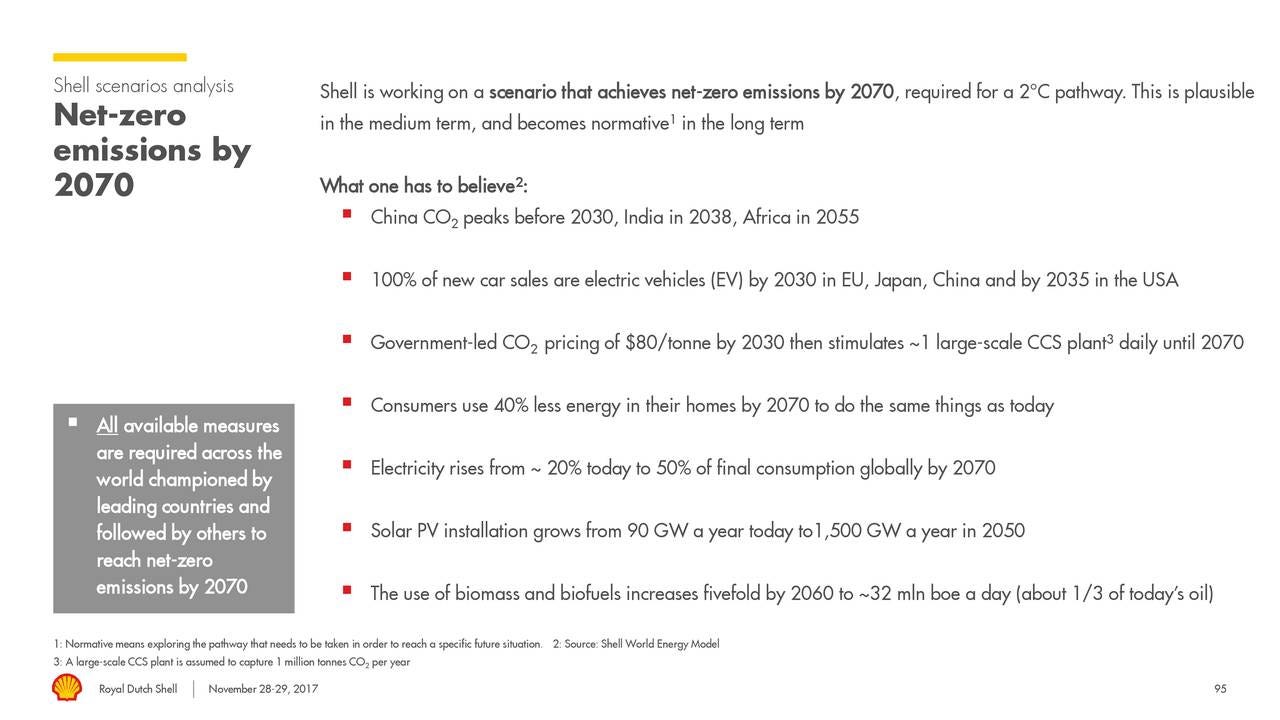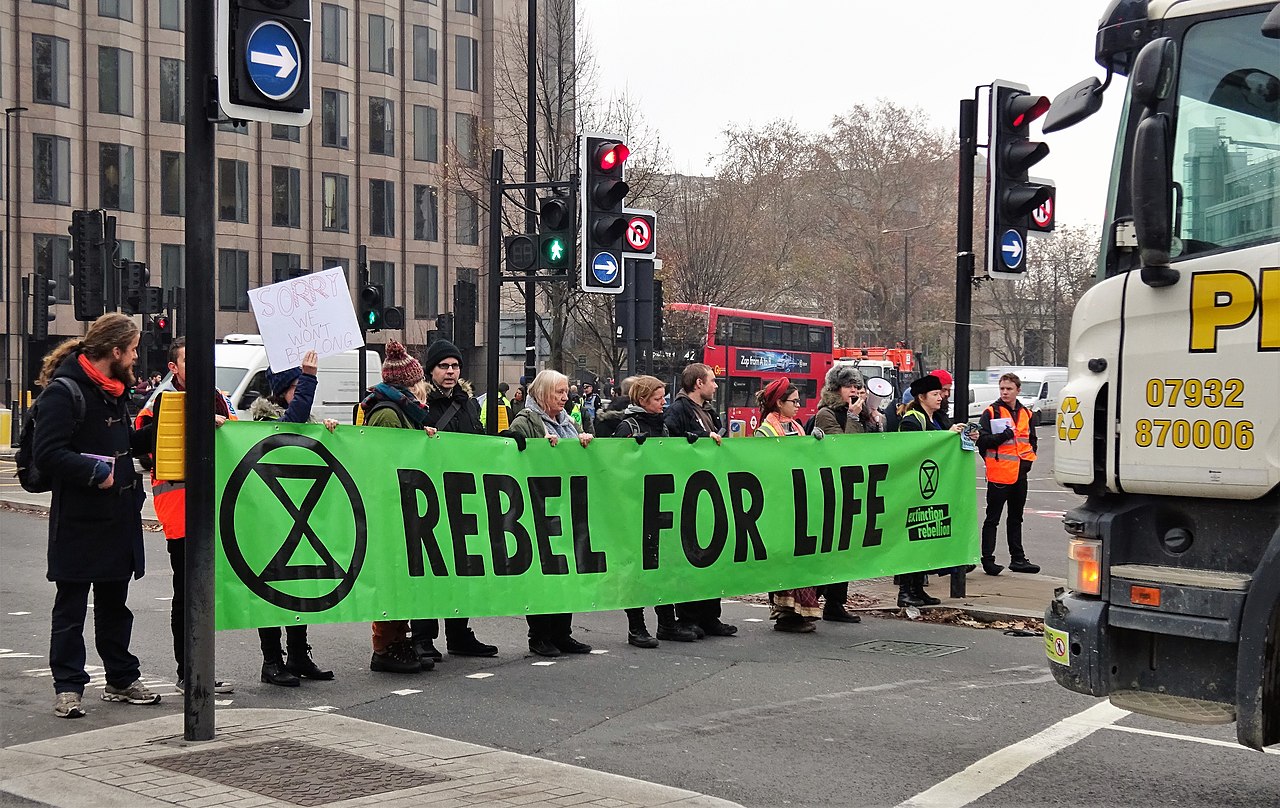Editors note: “Green technology” has become the policy centerpiece of the mainstream climate movement. But the idea that technology will solve global warming is a dangerous lie. And as Kim Hill explains in this piece, it is also highly profitable. This is no accident. We offer this article to those who suspect XR is engaging in ineffective resistance, and who are looking for a better way. Analysis is the first step toward effective action.
By Kim Hill
The Extinction Rebellion (XR) movement has taken off around the world, with millions of people taking to the streets to demand that governments take action on climate change and the broader ecological crisis. The scale of the movement means it has the potential to have an enormous impact on the course of history, by bringing about massive changes to the structure of our societies and economic systems.
The exact nature of the demanded action is not made clear, and warrants a close examination. There is a long history of powerful government and corporate interests throwing their support behind social movements, only to redirect the course of action to suit their own ends, and Extinction Rebellion is no exception.
With the entirety of life on this planet at stake, any course of action needs to be considered extremely carefully. Actions have consequences, and at this late stage, one mis-step can be catastrophic. The feeling that these issues have been discussed long enough and it is now time for immediate action is understandable. However, without clear goals and a plan on how to achieve them, the actions taken are likely to do more harm than good.
Extinction and climate change are among the many disastrous effects of an industrial society. While the desire to take action to stop the extinction of the natural world is admirable, rebelling against the effects without directly confronting the economic and political systems that are the root cause is like treating the symptoms of an illness without investigating or diagnosing it first. It won’t work. Addressing only one aspect of the global system, without taking into account the interconnected industries and governance structures, will only lead to worse problems.
Demand 2: net-zero emissions

The rebellion’s goals are expressed in three demands, under the headings Tell the Truth, Act Now and Beyond Politics. I’m starting with the second demand because net-zero is the core goal of the rebellion, and the one that will have enormous political, economic and social impact.
What does net-zero emissions mean? In the words of Catherine Abreau, executive director of the Climate Action Network: “In short, it means the amount of emissions being put into the atmosphere is equal to the amount being captured.” The term carbon-neutral is interchangeable with net-zero.
Net-zero emissions is Not a Thing. There is no way to un-burn fossil fuels. This demand is not for the extraction and burning to stop, but for the oil and gas industry to continue, while powering some non-existent technology that makes it all okay. XR doesn’t specify how they plan to reach the goal.
Proponents of net-zero emissions advocate for the trading of carbon offsets, so industries can pay to have their emissions captured elsewhere, without reducing any on their part. This approach creates a whole new industry of selling carbon credits. Wind turbines, hydro-electric dams, biofuels, solar panels, energy efficiency projects, and carbon capture are commonly traded carbon offsets. None of these actually reduce carbon emissions in practice, and are themselves contributing to greenhouse gas emissions, so make the problem worse. Using this approach, a supposedly carbon-neutral economy leads to increased extraction and burning, and generates massive profits for corporations in the process. Head of environmental markets at Barclays Capital, Louis Redshaw, predicted in 2007 “carbon will be the world’s biggest commodity market, and it could become the world’s biggest market overall.”
The demand for net-zero emissions has been echoed by a group of more than 100 companies and lobby groups, who say in a letter to the UK government: “We see the threat that climate change poses to our businesses and to our investments, as well as the significant economic opportunities that come with being an early mover in the development of new low-carbon goods and services.” Included in this group are Shell, Nestle and Unilever. This is the same Shell that has caused thousands of oil spills and toxic leaks in Nigeria and around the world, executed protesters, owns 60 per cent of the Athabasca oil sands project in Alberta, and intends to continue extracting oil long into the future; the same Nestle that profits from contaminated water supplies by selling bottled water, while depleting the world’s aquifers; the same Unilever that is responsible for clearing rainforests for palm oil and paper, dumping tonnes of mercury in India, and making billions by marketing plastic-wrapped junk food and unnecessary consumer products to the world’s poorest people. All these companies advocate for free trade and privatization of the commons, and exploit workers and lax environmental laws in the third world. As their letter says, their motivation is to profit from the crisis, not to stop the destruction they are causing.
These are XR’s allies in the call for net-zero emissions.

A few more of the billionaires and associated capitalists promoting (and profiting from) the cause

The coal industry sees net-zero as a great opportunity to expand its business.
The nuclear industry also sees the net-zero target as a cause for celebration, and even fracking is considered compatible with the goal.
Net-zero emissions in practice
Let’s look at some of the proposed approaches to achieve net-zero in more detail.
Renewable energy doesn’t reduce the amount of energy being generated by fossil fuels, and doesn’t do anything to reduce atmospheric carbon. Wind turbines and solar panels are made of metals, which are mined using fossil fuels. Any attempt to transition to 100% renewables would require more of some rare earth metals than exist on the planet, and rare earth mining is mostly done illegally in ecologically sensitive areas in China. There are plans to mine the deep sea to extract the minerals needed for solar panels, wind turbines and electric car batteries. Mining causes massive destruction and pollution of forests and rivers, leading to increased rates of extinction and climate change. And huge profits for mining and energy companies, who can claim government subsidies for powering the new climate economy. The amount of fossil fuels needed to power the mines, manufacturing, infrastructure and maintenance of renewables makes the goal of transitioning to clean energy completely meaningless. Wind and solar ‘farms’ are installed on land taken from actual farms, as well as deserts and forests. And the energy generated is not used to protect endangered species, but to power the industries that are driving us all extinct. Not a solution. Not even close. In the net-zero logic of offset trading, renewables are presented as not an alternative to fossil fuel extraction, but instead a way to buy a pass to burn even more oil. That’s a double shot of epic fail for renewables.

The composition of a single 3MW turbine. There are currently around 350 000 turbines in the world, and to meet current energy consumption with 100% wind power would require close to 4 million turbines. Image: The World Bank — Climate-Smart Mining: Minerals for Climate Action
Improving efficiency of industrial processes leads to an increase in the amount of energy consumed, not a decrease, as more can be produced with the available energy, and more energy is made available for other uses. The industries that are converting the living world into disposable crap need to be stopped, not given money to destroy the planet more efficiently.
Reforestation would be a great way to start repairing the damage done to the world, but instead is being used to expand the timber industry, which uses terms like ‘forest carbon markets’ and ‘net-zero deforestation’ to legitimize destroying old-growth forests, evicting their inhabitants, and replacing them with plantations. Those seeking to profit from reforestation are promoting genetically engineered, pesticide-dependent monocrop plantations, to be planted by drones, and are anticipating an increase in demand for wood products in the new ‘bioeconomy’. Twelve million hectares of tropical rainforest were cleared in 2018, the equivalent of 30 football fields a minute. Land clearing at this rate has been going on for decades, with no sign of stopping. No carbon offsets or emissions trading can have any effect while forest destruction continues. And making an effort to repair past damage does not make it okay to continue causing harm long into the future. A necessary condition of regenerating the land is that all destructive activity needs to stop.
Carbon capture and storage (CCS) is promoted as a way to extract carbon dioxide from industrial emissions, and bury it deep underground. Large amounts of energy and fresh water are required to do this, and pollutants are released into the atmosphere in the process. The purpose of currently-operational carbon capture installations is not to store the carbon dioxide, but to use it in a process called Enhanced Oil Recovery (EOR), which involves injecting CO2 into near-depleted oil fields, to extract more fossil fuels than would otherwise be accessible. And with carbon trading, the business of extracting oil becomes more profitable, as it can sell offset credits. Again, the proposed solution leads to more fossil fuel use, not less. Stored carbon dioxide is highly likely to leak out into the atmosphere, causing earthquakes and asphyxiating any nearby living beings. This headline says all you need to know: “Best Carbon Capture Facility In World Emits 25 Times More CO2 Than Sequestered”. Carbon capture for underground storage is neither technically nor commercially viable, as it is risky and there is no financial incentive to store the carbon dioxide, so requires government investment and subsidies. And the subsidies lead to coal and gas becoming more financially viable, thus expanding the industry.

Captured carbon is used to extract oil, in Enhanced Oil Recovery (EOR). If the emissions site is not near an oil well, the carbon dioxide must be shipped or piped vast distances. Implementing carbon capture at scale will require 23 000 miles of carbon dioxide pipelines in the US alone.
Bio-energy with carbon capture and storage(BECCS) is a psychopathic scheme to clear forests, and take over agricultural land to grow genetically modified fuel crops, burn the trees and crops as an energy source, and then bury the carbon dioxide underground (where it’s used to expand oil and gas production). It would require an amount of land almost the size of Australia, or up to 80% of current global cropland, masses of chemical fertilizers (made from fossil fuels), and lead to soil degradation (leading to more emissions), food shortages, water shortages, land theft, massive increase in the rate of extinction, and I can’t keep researching these effects it’s making me feel ill. Proponents of BECCS (i.e. fossil fuel companies) acknowledge that meeting the targets will require “three times the world’s total cereal production, twice the annual world use of water for agriculture, and twenty times the annual use of nutrients.” Of course this will mostly take place on land stolen from the poor, in Africa, South America and Asia. And the energy generated used to make more fighter jets, Hollywood movies, pointless gadgets and urban sprawl. Burning of forests for fuel is already happening in the US and UK, all in the name of clean energy. Attaching carbon capture to bioenergy means that 30% more trees or crops need to be burned to power the CCS facility, to sequester the emissions caused by burning them. And again, it’s an offset, so sold as a justification to keep the fossil fuel industry in business. The Intergovernmental Panel on Climate Change (in the three most likely of its four scenarios) recommends implementing BECCS on a large scale to keep warming below 2°C. Anyone who thinks this is a good idea can go burn in hell, where they can be put to good use as an energy source.

This image was made in 2015, and since then millions of tonnes of wood pellets have been imported into the UK from clearfelled US forests, and burned in the Drax Power Station in Yorkshire, to power people’s homes. Energy companies receive around £1billion per year in UK subsidies for generating electricity from biomass. There are plans to build several more biomass power stations. Image: www.biofuelwatch.org.uk .
This is what a decarbonised economy looks like in practice. An enormous increase in fossil fuel extraction, land clearing, mining (up to nine times as much as current levels), pollution, resource wars, exploitation, and extinction. All the money XR is demanding that governments invest in decarbonisation is going straight to the oil, gas, coal and mining companies, to expand their industries and add to their profits. The Centre for International Environmental Law, in the report Fuel to the Fire, states “Overall, the US government has been funding CCS research since 1997, with over $5billion being appropriated since 2010.” Fossil fuel companies have been advocating net-zero for some years, as it is seen as a way to save a failing coal industry, and increase demand for oil and gas, because solar, wind, biofuels and carbon capture technologies are all dependent on fossil fuels for their operation.
Anyone claiming that a carbon-neutral economy is possible is not telling the truth. All of these strategies emit more greenhouse gases than they capture. The second demand directly contradicts the first.
These approaches are used to hide the problem, and dump the consequences on someone else: the poor, nonhuman life, the third world, and future generations, all in the service of profits in the present. The goal here is not to maintain a stable climate, or to protect endangered species, but to make money out of pretending to care.
Green growth, net-zero emissions and the Green New Deal (which explicitly states in its report that the purpose is to stimulate the economy, which includes plans to extract “remaining fossil fuel with carbon capture”) are fantasy stories sold to us by energy companies, a shiny advertisement sucking us in with their claims to make life better. In reality the product is useless, and draws us collectively into a debt that we’re already paying for by being killed off at a rate of 200 species a day. With exponential economic growth (a.k.a. exponential climate action) the rate of extinction will also grow exponentially. And the money to pay for it all comes directly from working people, in the form of pension funds, carbon taxes, and climate emergency levies.

The US branch of Extinction Rebellion lists growth as its primary goal. Image: extinctionrebellion.us
The transition to net-zero
There are plans for thousands of carbon capture facilities to be built in the coming years, all requiring roads, pipelines, powerlines, shipping, land clearing, water extraction, pollution, noise, and the undermining of local economies for corporate profits, all for the purpose of extracting more oil. And all with the full support of the rebellion.


Shell’s plan to reach net-zero is to make more than a billion cars, cover millions of acres of land with solar panels, build a new large-scale carbon capture facility every day for 40 years (that’s more than 14 000), and for one third of current oil consumption to be met by bioenergy. This would leave a large proportion of the world’s human population without food, and most of the world’s wildlife without homes. This plan amounts to both genocide and ecocide. And Extinction Rebellion wants all this to happen by 2025.
To get a sense of the scale of this economic transformation, a billion seconds is almost 32 years. If you were to line up a billion cars and run over them (or run them over) at a rate of one car per second, you’d be running for 32 years non-stop. That’s enough cars to stretch 100 times around the equator. You’d probably need to turn entire continents into a mine site to extract all the minerals required to make them. And even that wouldn’t be enough, as some of the rare earth metals required for batteries don’t exist in sufficient quantities. If all these cars are powered by renewables, you do the math on how much mining would be needed to make all the wind turbines and solar panels. Maybe several more continents. And then a few more covered in panels, turbines, powerlines, substations. And a few more to extract all the oil needed to power the mining and road building. Which all leaves no space for any life. And all for what? So we can spend our lives stuck in traffic? It’s ridiculous and apocalyptic, yet this is what the net-zero lobbyists, with the US and UK governments, and the European Union, have already begun implementing.

Shell leads the energy transition, with gas, biofuels, carbon capture, renewables, patented technologies, selling offsets, “Scenarios thought leadership” meaning setting the global agenda, and advising governments on how best to serve their business. All while continuing with their core activity of extracting oil.
Shell’s thought leadership and government advisory schemes appear to be going great, with the US senate passing a number of bills in recent months to increase subsidies for oil companies using carbon capture, and a few more, to subsidise wind, solar, nuclear, coal, gas, research and development, and even more carbon capture, are scheduled to pass in the coming months.

This from July 17, lists just a few of the many bills proposing to increase funding for the energy industry. No objections from the rebels.
The UK government, with guidance from the creepy-sounding nonprofit Energy and Climate Intelligence Unit, is implementing a transition to net-zero, involving carbon capture, nuclear, bioenergy, hydrogen, ammonia, wind, solar, oil, gas, electric cars, smart grids, offset trading, manufacturing and the obligatory economic growth. And offering ‘climate finance’ to third world countries, to impose this industrial horror on the entire planet. All led by their advisors from the fossil fuel and finance industries, with input from the CCS, oil, gas, bioenergy, renewables, chemical, manufacturing, hydrogen, nuclear, airline, automotive, mining, and agriculture industries.

From the report Net Zero: The UK’s contribution to stopping global warming, p140. This makes clear that as well as ‘low-regret’ options, there is the full intention to institute some ‘speculative options’, meaning technologies that are certain to cause environmental and social devastation. And high levels of regret. Among these are Direct Air Capture, increasing demand for timber, reducing meat and dairy consumption by 50% and replacing with synthetic meat, converting farmland to biofuel crops, short-rotation forestry (meaning cutting down a lot more trees), enhanced weathering, biochar, synthetic fuels, higher CCS capture rates, and wider hydrogen roll-out. On this scale, carbon capture and BECCS are only considered low-to-mid-range regrettable. The report makes clear that “CCS is a necessity not an option.”

More from the UK’s plan for transition to net-zero. Biofuel-powered planes, ammonia-powered shipping, electric and hydrogen-powered vehicles, and “clean growth and industrial opportunities.” All completely dependent on fossil fuels.

September 3: The oil and gas industry has already begun expanding its operations in response to the UK’s announcement of the net-zero goal. “The new Centre will work with government and industry to address the UK offshore oil and gas industry’s footprint while also developing technologies that will contribute to the growing demand for hydrogen production and carbon sequestration… UK Energy and Clean Growth Minister Kwasi Kwarteng, said: ‘The UK’s oil and gas sector has a pivotal role to play in the UK’s journey towards becoming a net zero economy by 2050. Support from companies within the industry is vital to us making this energy transition to a greener future.’”
The European Union, advised by the corporate-funded European Climate Foundation, are implementing a similar plan, aiming to remain competitive with the rest of the industrialised world. The EU intends to commit 25% of its budget to implementing so-called climate mitigation strategies. Other industrialised countries also have plans to transition to a decarbonised economy.
Net-zero emissions is also the goal of the councils that have declared a climate emergency, which now number close to 1000, covering more than 200 million citizens.
This is the plan the rebellion is uniting behind to demand from the world’s governments.

Australia’s decarbonisation plan, with all the usual suspects: efficiency, renewables, nuclear, CCS, gas, carbon forestry, bioenergy and economic growth. ClimateWorks is funded by fossil fuel industry investors .
+ + + + + +
Part II will cover the rebellion’s other two demands, for truth from government and a Citizens’ Assembly; the tactics being used by the rebellion; and their proposed solutions to climate and ecological collapse.
Featured image by David Holt, used under the Creative Commons Attribution 2.0 Generic license.
